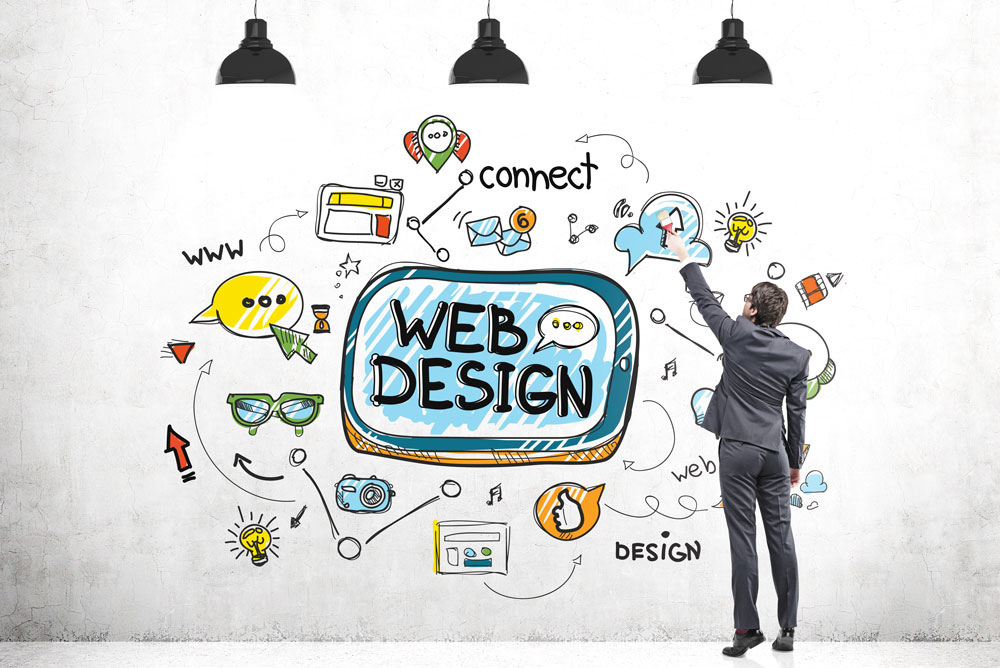The Comprehensive Guide to Crafting Aesthetically Appealing and Practical Web Design That Meets User Demands
In today's digital landscape, the relevance of crafting internet designs that are both useful and visually attractive can not be overemphasized. By focusing on user-centered design principles, developers can develop experiences that not only attract but additionally keep individual passion.
Understanding User-Centered Design
At the heart of efficient internet layout exists the principle of user-centered style, a viewpoint that focuses on the requirements, choices, and actions of users throughout the advancement procedure. This strategy involves extensive research study to comprehend the target audience, making certain that the last product resonates with its intended users. By incorporating individual comments at every stage, developers can develop user interfaces that are not just aesthetically enticing yet additionally useful and instinctive.
User-centered style emphasizes empathy, requiring designers to enter the customers' footwear and consider their viewpoints. Strategies such as customer personalities, journey mapping, and usability screening are used to determine pain points and opportunities for enhancement. This iterative process enables consistent improvement, as designers adapt to evolving user demands and technical advancements.
Incorporating user-centered layout causes boosted individual complete satisfaction and engagement, ultimately resulting in higher conversion prices and brand name loyalty. It fosters a joint setting where stakeholders, including individuals, developers, and developers, interact to achieve a common vision. By placing customers at the leading edge of the design procedure, organizations can produce websites that not just meet service objectives yet likewise offer rewarding and significant experiences for customers.
Secret Concepts of Visual Design
Efficient aesthetic style functions as the foundation for developing straightforward and engaging web sites. It incorporates several key concepts that lead designers in crafting visually pleasing and practical user interfaces.
First, balance plays an essential function in attaining aesthetic harmony. Developers should distribute aspects evenly across the design to stay clear of frustrating users. This can be attained via unbalanced or in proportion design methods.

Additionally, placement is essential for organizing details. Consistent placement of text and pictures cultivates a clean design, boosting general navigating and individual experience.
 Distance additionally adds to visual quality. Organizing related products with each other help individuals in comprehending the partnership between different aspects, making the user interface more user-friendly.
Distance additionally adds to visual quality. Organizing related products with each other help individuals in comprehending the partnership between different aspects, making the user interface more user-friendly.Finally, uniformity in layout elements, such as styles, colors, and fonts, enhances brand name identity and helps individuals browse the website a lot more easily. By incorporating these vital principles of aesthetic layout, internet developers can develop user interfaces that are not just aesthetically appealing but also functional and user-centered.

Importance of Responsive Style
Receptive design is a crucial element of modern-day web advancement, ensuring that web sites operate perfectly throughout a variety of gadgets and display sizes. As the web landscape advances, the diversity of devicesâEUR" ranging from mobile phones to tablet computers and desktop computersâEUR" try this necessitates a style strategy that accommodates all individuals.
Applying receptive layout permits a flexible design that instantly adjusts based upon the user's screen dimensions. This versatility not just boosts access but likewise enhances use, as customers can browse and interact with the website easily, no matter of their tool.
Moreover, search engines like Google prioritize mobile-friendly web sites in their ranking formulas. A receptive layout can significantly enhance a site's SEO performance, ultimately driving more traffic and increasing exposure.
In addition, receptive style minimizes the demand for preserving several versions of a site, improving updates and content monitoring. This efficiency translates right into expense savings and a more natural brand name experience across platforms.
Enhancing Customer Experience
Customer experience (UX) is an essential element of website design, influencing how site visitors engage with a site and perceive its worth. A well-crafted UX makes sure that users can browse without effort, find details quickly, and attain their goals effectively. The design has to think about the user's trip, from the moment they land on the website to the completion of their wanted activity, whether that be making a purchase, registering for an e-newsletter, or accessing information.
Crucial element that enhance UX consist of clear navigation, receptive designs, and interesting visual web content. Consistency in layout aspects such as colors, switches, and fonts cultivates experience, making the web site really feel natural. Additionally, enhancing tons times is crucial; individuals are much less most likely to remain on a site that is slow to react.
Including ease of access attributes ensures that all customers, consisting of those with handicaps, can communicate with the website flawlessly. User-centric style concepts need to guide content organization, supplying pertinent details in a sensible structure. web design. By prioritizing individual demands click resources and choices, internet developers can develop experiences that are not only visually appealing but likewise practical, eventually promoting individual complete satisfaction and loyalty
Evaluating and Iterating Styles
Evaluating and iterating styles are essential processes that comply with the preliminary development of a site, making sure that the individual experience stays at the leading edge of any type of modifications. These stages involve collecting customer responses, analyzing design efficiency, and making educated adjustments to improve use and interaction.
Efficient screening can take numerous kinds, consisting of usability screening, A/B testing, and individual surveys. Use testing allows designers to observe actual individuals as they communicate with the website, recognizing discomfort points and locations for enhancement. A/B testing, on the various other hand, contrasts two versions of a design component to figure out which carries out much better, supplying quantifiable information to guide choices. Individual surveys can supply qualitative insights, recording individual sentiments and choices.
Once testing is finished, the iteration stage begins. This includes refining the design based on the collected data, focusing on changes that line up with customer requirements and organization goals. Constant iteration cultivates an adaptive style strategy, where the site progresses in response to individual actions and feedback. By dedicating to extensive screening and iteration, designers can develop a site that not just fulfills aesthetic requirements yet additionally delivers a seamless and delightful individual experience.
Verdict
Finally, efficient internet style requires the combination of user-centered principles, key aesthetic style aspects, and receptive structures to produce engaging user interfaces. By focusing on individual needs and executing continuous screening and version, designers can refine their productions to improve overall complete satisfaction. The dedication to these methods not only cultivates an aesthetically appealing aesthetic but additionally makes sure functionality throughout diverse devices, inevitably contributing to a favorable individual experience and increased involvement.
By prioritizing user-centered design concepts, designers can develop experiences that not website link only bring in however also maintain user passion.At the heart of efficient internet design exists the principle of user-centered style, a viewpoint that focuses on the needs, preferences, and actions of users throughout the advancement process. By positioning individuals at the center of the design procedure, organizations can produce websites that not just fulfill company purposes but likewise give significant and fulfilling experiences for users.
By prioritizing individual demands and preferences, web developers can develop experiences that are not only visually attractive yet likewise practical, inevitably fostering individual contentment and loyalty.
User surveys can use qualitative understandings, capturing user beliefs and preferences. (web design)
Comments on “Checking out the Influence of User Experience on Successful Web Design”